To say I love lavender is an understatement. I have lavender dish soap, hand soap, laundry detergent, lotion, creams, and perfumes. I'm always looking for more everyday uses for lavender.
About 8 or 9 years ago, I started making my own lavender linen spray. I just wasn't going to pay the steep price for a bottle from a fancy store anymore—especially when making it at home is so inexpensive and easy to do.
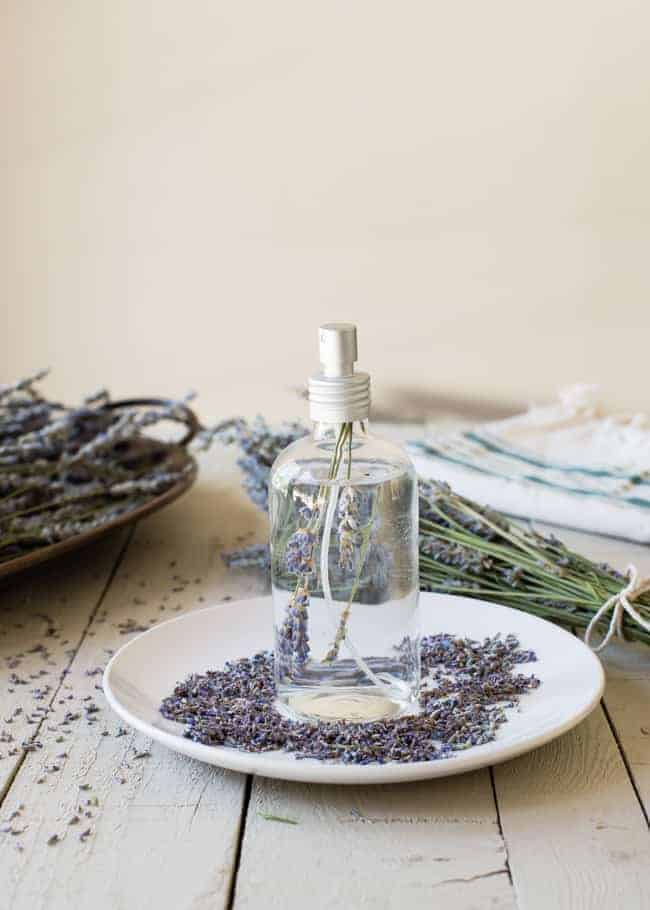
How To Make a Lavender Linen Spray
A linen spray that uses natural botanicals can help you unwind when you need it most. Lavender is well-known for its calming, stress relieving and relaxation properties. That’s why it’s so effective at helping you get to sleep!
And you'll usually find it in bath and body products because, according to a 2013 study, it's effective at at calming the nervous system and physically relaxing the body. You can make lavender linen spray one of two ways, but first, let's talk about the process of cutting and drying lavender.
How to Dry Lavender
There are several lavender farms where I live, and summer is the perfect time for visiting to cut some fresh lavender for drying. If you have a lavender farm near you—or a lavender plant growing in your yard or that of a friend or neighbor—it's a great time to take advantage of it and dry a few bunches to enjoy throughout the year.
When cutting fresh lavender, make sure to cut all of the stems about the same length to make drying easy. Grab a handful of stems about 4 inches above the bottom of the plant, and use sharp garden shears to make a clean cut.
Lavender can be dried in a single layer on a cooling rack or similar surface to allow the air to circulate around it.
Dried lavender bunches
I prefer creating small bunches, tying them with string, and hanging them. Loosely cover the buds with cheesecloth, if needed, to keep bugs out of them as they dry.
Making smaller bunches is important so the stems and buds don't grow mold. Drying the lavender outside in a shady spot is fine, as in a garage, basement, or kitchen.
I prefer not to dry the bunches in a sunny spot because I feel like the heat is too damaging. The goal is to keep the natural oils from dissipating.
The lavender should be completely dried after 3 to 5 days, depending on the size and freshness of the bunch. If you want to use only the buds, run your fingers over the dried flowers, and they should come right off the stem.
Store in an airtight container. The dried whole lavender stems should be kept somewhere dry, preferably covered (unless they are a decoration) to prevent spiders and pests from creating a home for themselves.
DIY Lavender Linen Spray Recipe
Now, to make the lavender linen spray, you'll need:
—2 cups distilled water or lavender floral water
—2 tablespoons vodka or grain alcohol
—15-20 drops lavender essential oil (or fresh lavender)
How to infuse vodka
It takes a little longer, but you can place fresh lavender into a jar with vodka, cover it with a lid, and place it in a dark, cool place for about a week. The lavender will infuse the vodka during that time.
You'll notice that the color will have transferred to the vodka. I don't use this method simply because I'm nervous it will stain my linens. (But the infused booze would make some delicious cocktails!)
Linen Spray Instructions
The method I use is to mix about 2 tablespoons of vodka with 2 cups of distilled water and add 15–20 drops of lavender essential oil. The alcohol helps keep the oil dissolved in the solution and preserves the scent. (But I always shake it before using it anyway.)
You can spritz it on bedding to freshen it up. We also use it for ironing. It makes the whole house smell lovely.
If you don't want to use alcohol, I've read that witch hazel is a good substitute, but I haven't tried that yet, so no guarantees! And that's it! Super easy.
You can even change it up by using different essential oils—rose, geranium, citrus, or various herbs—to create a custom scent blend.
What are your favorite ways to use lavender at home? I'm planning a spring cleaning spree, and you can bet I'll be incorporating all of the lavender oil green cleaning ideas I can find!
DIY Dried Lavender + Lavender Linen Spray FAQs
How long does dried lavender last?
While DIY dried lavender may start to lose its signature hue after about a year, if stored properly, it can last and maintain its scent for more than a decade! To ensure longevity, store your dried lavender in the best conditions.
You'll want to keep it in an airtight container, away from light, humidity, and heat, to preserve the fragrance and discourage mold growth.
Do I need to use alcohol to make this DIY lavender linen spray?
While you can eliminate this ingredient, we included it because alcohol helps the essential oils bind to and mix with the water, discourages the growth of bacteria and mold, and makes the scent last longer.
How can I make the scent of dried lavender last longer?
To release the scent of dried lavender when it’s begun to fade, you can squeeze or crush the flowers gently. You can also add a few drops of lavender essential oil to the dried flowers themselves to recharge the scent.
Can I use dried lavender instead of essential oil to make this DIY linen spray?
You can substitute dried lavender buds for the lavender essential oil used in this recipe, but keep in mind that the color of the fresh lavender may stain or discolor light-colored fabric. I would suggest testing out the spray in an inconspicuous spot on the fabric before using.
To recreate this DIY linen spray with dried lavender, you can substitute 1–2 teaspoons of dried buds for the essential oil. Depending on how strong the scent of your lavender is, you may require more or less, so adjust according to your preference.
DIY Lavender Linen Spray
Equipment
- 8 ounce spray bottle
Materials
- 1 cup distilled water
- 2 tablespoons vodka or rubbing alcohol
- 15–20 drops lavender essential oil
Instructions
- Add vodka or rubbing alcohol and essential oil drops to the spray bottle. Let sit 5–10 minutes. Then fill the bottle with distilled water.
- Replace the spray nozzle and shake well.
Notes
This article was medically reviewed by Dr. Gina Jansheski, a licensed, board-certified physician with more than 20 years of practice experience. Learn more about Hello Glow's medical reviewers here. As always, this is not personal medical advice, and we recommend that you talk with your doctor.
227
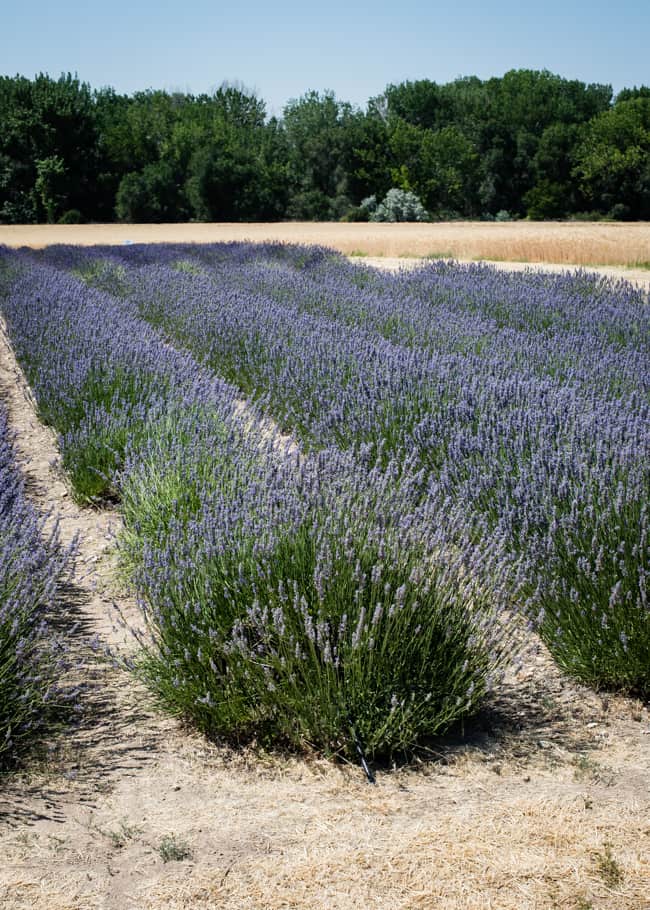
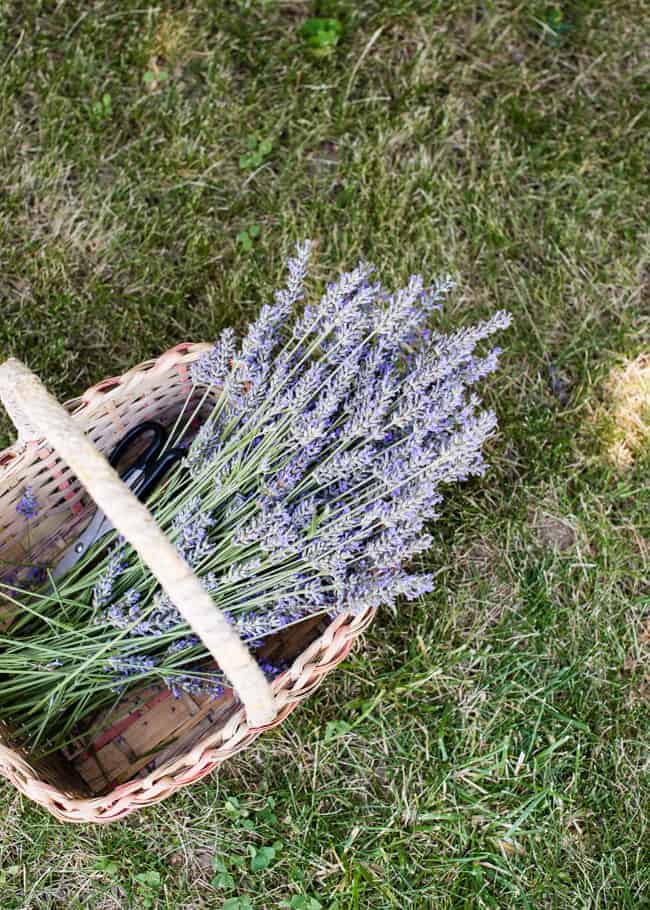
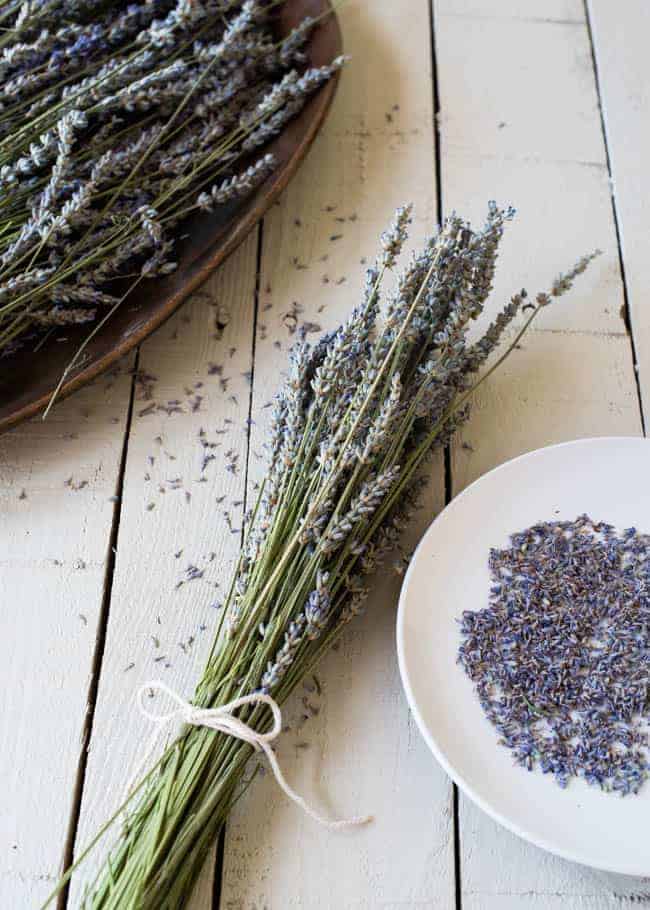
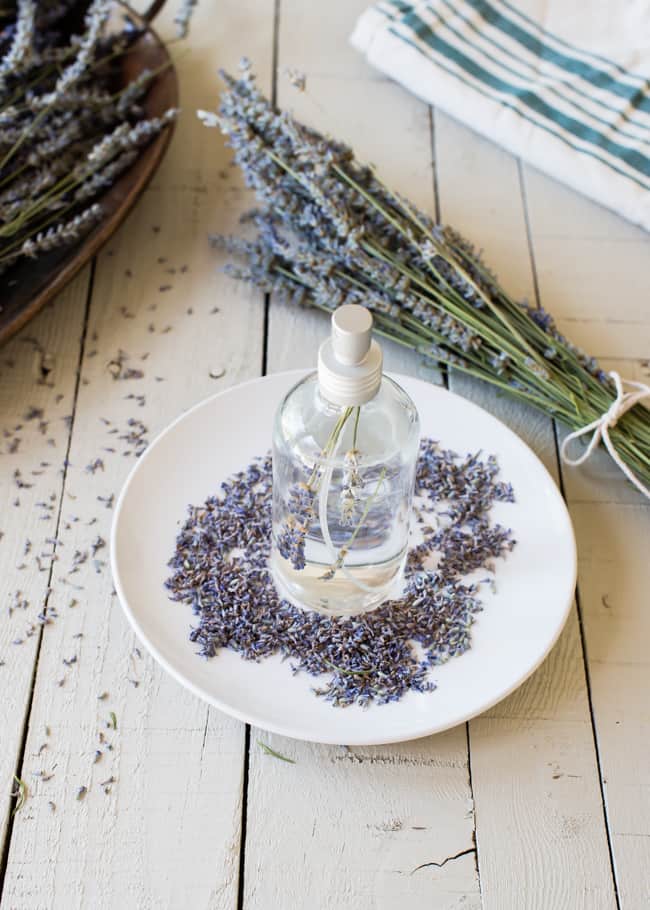
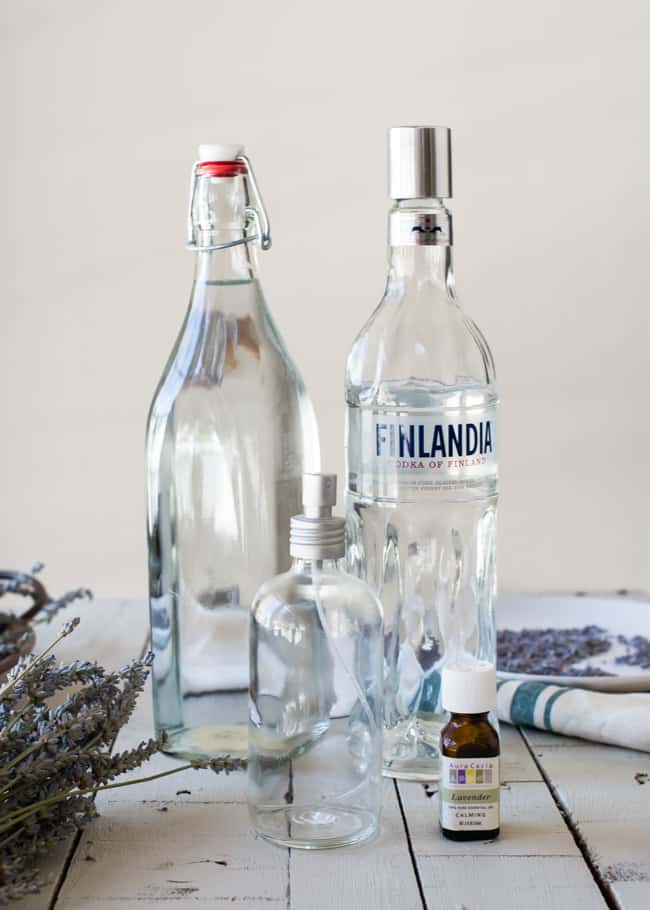
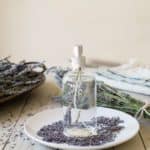
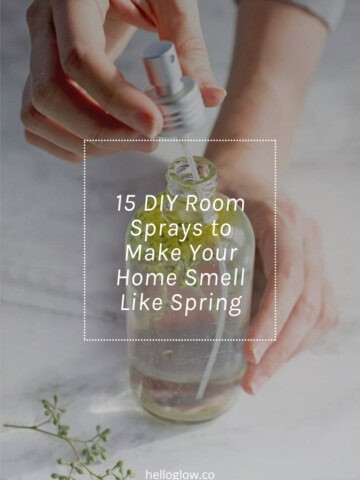
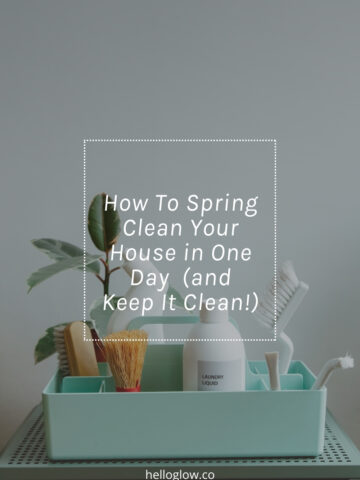

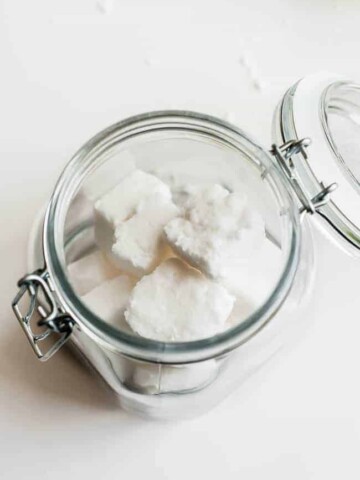
Cheryl says
Where did you find the spray bottles with the silver sprayers?
Vinny Grette says
Why distilled water? I use ordinary filtered water (Brita) and it seems to be AOK...
Mike G. says
Any tips on infusing lavender into gin or vodka to flavor these two spirits? I'm thinking put about a TBSP of dried, cleaned flowers into 4 ozs. of spirits, just to get an idea of proportions and taste, and letting it sit for a few days before drinking. From there, you can adjust proportions accordingly. As Nolets has shown, lavender and gin go very well together and are a nice change from the citrus overkill that some gins have.
BTW, I had to laugh when I saw Finlandia being used to make the spray sachet. Since you won't be drinking it, Popov, Crown Russe, or any cheapo brand will be fine; no need for a quality vodka at all!
Deborah Andio says
Distilled water contains no chemicals.
Kathy says
Hi, great idea. I am wondering if the prepared linen spray can be stored in a plastic bottle or does it have to be glass?
Deborah Andio says
Distilled water is best no chemicals in it: have you ever seen what the chemicals in hard water do to irons? Faucets etc. and I always use a glass bottle. You can’t beat the classic glass jar for storing dried herbs or homemade herbal mixtures tinctures etc. It seals well. Sometimes plastic leaks.
Tay says
Also pure therapeutic grade essential oils will ,over time, break down plastics, releasing into the solution. Glass is the way to go!
Alexandra says
Hi, why does it have to be distilled water? Can I use filtered water?
Aysu says
Amazing idea.Thanks a lot .
lori says
I need to see if I can grow Lavender where I live...would love to have it fresh. Thanks for this
sleelar says
how much dry lavender do you put into the spray? The instructions note to dry fresh lavender then uses drops of the oil.
Britnee says
Where did you get that great glass spray bottle?
Nada says
Hello, What is the alcohol for? Is it for making the lavender linen spray scent last longer? As I wanted something 100 percent natural. Thank you.
Stephanie Gerber says
Yes, the alcohol helps the essential oils and the water mix together and also helps the scent last longer. You can eliminate if desired.
Nada says
Thank you ?????
Mary says
Hi Lindsey,
Thank you so much for sharing your Lavender tips. Your kindness will help all of us who may want to take it up. I have started to make
Homemade Hand dish washing liquid, Air spray,Lavender Linen spray, Ironing starch, ironing water and Lavender/Rose perfume. I am grateful to you and all the other kind Ladies who share their recipes to help encourage us and see just how easy it to make them and save money for the family. God bless you.
Caylen Knight says
Can I used dried lavender buds in laundry detergent?
Hannelore says
Das gehe ausprobieren, ich habe viel Lavendel im Garten
B says
If I'm using lavender buds (I went a little crazy and bought way too much culinary grade lavender), what's the ratio of buds to alcohol?
Lindsey Johnson says
I would say around 1-2 teaspoons depending on how strong the scent is. You can always add more of the alcohol or the lavender until it is to your preference. I will say to be careful with the fresh lavender - the color bleeds out into the liquid and can stain white or other light-colored cloth.
B says
Thanks! I'll have to keep that in mind for white/light colored linen. I'm actually looking to make a spray for my boxing gloves/shoes as I'm not a fan of all the chemicals in purchasable sprays. I've looked on a number of sites for recipes, seems I should be able to batch soak the buds in alcohol then dilute with water for the actual spray. Let's see how well this fares for this use!
Melissa Mee says
I just made this lavender linen spray with NOW 100% lavender oil. It is FABULOUS! I'm going a bit crazy spraying everything. My only problem is that I had to use Grey Goose. WIth that said, it was definitely worth it. Greatly appreciated. Thank you, thank you, thank you!
me says
So you talk about fresh lavender, but your recipe mentions nothing about it.
maureen says
I have two small lavender plants outside when you rub the leaves the smell is lovely there are little buds of flowers right now. My question is I want to use them for a spray with water for keeping spiders at bay by spraying window sills and door jams what is the best way to do this. Should I dry them and chop up in a water bottle
Stella says
After drying the lavender and letting it soak in alcohol couldn't we add distilled water and use it in the rinse cycle.
or spray a sponge and thr I w it into the dryer to leave the scent
Aromadabbler says
When I used perfume grade alcohol to combine with essential oils, the liquid becomes cloudy. How do I create a blend that produces clear liquid? Thanks!
rhonda says
Hi......Do I add lavender oil in addition to the dried lavender. Also is it lavender stems and flowers or just flowers?
Lindsey Johnson says
My preference is the lavender oil over the flowers and stems only because I'm sometimes afraid it will leave a stain on my white linens. Otherwise, the buds work great. The scent diffuses easily into the water/alcohol mixture. You don't have to add both the oil and buds. The oil will give a stronger scent. You don't have to use the stems, but you certainly can. Hope that helps!
aaa says
I think what you published was very logical. However, consider this, what if you typed a catchier title?
I am not saying your content is not solid., however what if you added a title to maybe get a person's attention? I mean How To Dry Lavender
+ DIY Lavender Linen Spray | HelloGlow.co is kinda plain. You should peek at Yahoo's front page
and see how they create article titles to get people to click.
You might try adding a video or a related picture or two to grab people interested about everything've written. In my
opinion, it would make your website a little livelier.
deidra says
Do you think this would work as a room de-odorizer? Sounds really great!
Lindsey Johnson says
Definitely! The recipe is very similar to the room deodorizer I make. :)
sally says
where did you get that exact spritzer? its gorgeous and ive been looking for it everywhere. Btw great post, love it
lillamy says
Thank you for the tip! I love your blog. And couldn't notice that u have FINLANDIA VODKA there, wow! Im from Finland and that makes me happy to see some "familiar" products :)
Lindsey Johnson says
It's great vodka! :)
Emily says
The instructions say to use 15-20 drops lavender essential oil. If we are using fresh lavender, how much should we use?
Lindsey Johnson says
Emily, great question! Sorry I neglected to add that. It kind of depends on how strong you want the scent to be. I could say like 4-5 stems would do nicely. The oil is much stronger and will last longer, so you might want add more than that if you think you won't use it rapidly.
Archena Dave says
I just need to know where would be the best place to get dry or fresh lavender bunches